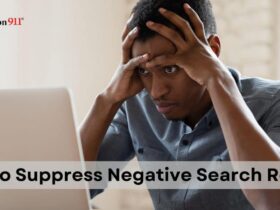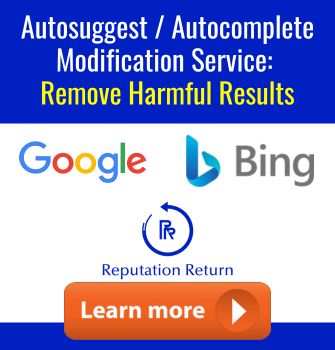In today’s digital world, a business crisis can strike at any time. It can harm a company’s reputation and its profits. Knowing how competitors manage these crises is key to creating a strong crisis management plan.
At ReputationReturn.com, we provide a free Rep Radar report. It compares your reputation to your competitors’. This helps you spot where you can improve and how to protect your online image.

By studying how competitors deal with online crises, businesses can learn a lot. They can understand crisis reputation management better. This way, they can stay ahead and keep a good online image.
Key Takeaways
- Understand how competitors handle online crises to develop a robust crisis management plan.
- Utilize Rep Radar report to compare your reputation with competitors.
- Identify areas for improvement in your online reputation.
- Develop effective strategies to protect and restore your online reputation.
- Stay ahead of the competition by leveraging competitive analysis.
The Digital Battlefield of Brand Reputation
The 24/7 news cycle and social media have turned brand reputation into a digital battleground. In this fast-paced world, a crisis can quickly spread and threaten a company’s online image.
How Crises Spread in Today's Connected World
Now, crises can move fast across digital platforms. It’s crucial for companies to respond quickly. A single incident can affect a company’s reputation and profits greatly.
Studies show that crisis news spreads faster with social media. This means businesses need to act fast to prevent damage.
The 24/7 News Cycle Impact on Brand Incidents
The constant news cycle can make small issues into big crises. Companies must be ready to face public scrutiny. They need a strong crisis management plan to handle incidents well.
| Channel | Impact on Brand Incidents |
|---|---|
| Social Media | Rapid spread of information, increased scrutiny |
| 24/7 News Cycle | Amplification of incidents, constant coverage |
Knowing how crises spread and the news cycle’s impact helps businesses protect their online reputation. They can develop strong crisis management strategies.
Recent High-Profile Crisis Management Examples
Looking at recent crises of big brands shows us how to handle tough situations. Companies like Nike, Peloton, and Starbucks have dealt with big issues. These include product problems and policy mistakes.
How Nike Handled the Vaporfly Controversy
Nike got a lot of criticism over its Vaporfly shoe. Some said it gave athletes an unfair edge. Nike listened to the athletes and worked with sports groups. They made rules for using the shoe in competitions.
Peloton's Response to Product Safety Concerns
Peloton had a crisis when people worried about its products’ safety. Peloton acted fast by recalling products and making them safer. They also talked more with customers to fix the problem.
Starbucks' Approach to Store Policy Backlash
Starbucks got flak for its store rules, like how it treats customers and employees. Starbucks changed its policies and trained its staff better. They also talked to customers to make things right.
| Company | Crisis | Response Strategy |
|---|---|---|
| Nike | Vaporfly Controversy | Engagement with the athletic community and governing bodies |
| Peloton | Product Safety Concerns | Immediate recall and enhancement of safety features |
| Starbucks | Store Policy Backlash | Policy revision and employee training |
These examples show that good crisis management is quick, open, and talks to everyone involved. By studying these big cases, businesses can learn how to handle their own crises better.
Crisis Management Strategies That Outperform the Competition
To outdo rivals, companies must use crisis management strategies that focus on being open and quick to act. In today’s world, having a solid plan is key to lessening the blow of brand crises and safeguarding crisis reputation.
Proactive vs. Reactive Approaches
Businesses that take a proactive crisis management stance are more ready for crises. They prepare for possible crises and have a plan to tackle them. This proactive stance helps avoid damage to reputation and keeps a good online image.
Speed of Response Comparisons
The speed of online response is vital in crisis management. Companies that act fast in crises are more likely to keep the issue under control. Slow responses, on the other hand, can make things worse, harming reputation more.
Transparency Levels That Build Trust
Being transparent is crucial for trust during a crisis. Open and honest, businesses show they’re serious about fixing the problem and keeping a good crisis reputation. For more tips on making your brand stronger, check out our practical guide to boost your brand.
By choosing a proactive crisis management strategy with quick online response and openness, businesses can beat their competitors and keep their reputation safe.
The Communication Gap: Why Some Brands Falter While Others Thrive
Effective communication is key to handling a crisis well. It makes the difference between brands that survive and those that don’t.
When a business faces a crisis, how it talks matters a lot. Message consistency is key to keeping trust with stakeholders.
Message Consistency Across Channels
Being clear in your message helps avoid confusion. It makes sure everyone gets the same story. This means:
- Working together across different teams
- Keeping the same tone and words
- Staying true to your crisis plan
Spokesperson Selection and Training
Choosing and training spokespersons is very important. A good one can:
- Show empathy and understanding
- Give clear, simple answers
- Keep trust with people
Audience-Specific Communication Strategies
It’s crucial to talk to different groups in a way that fits them. Each group has its own worries and needs. Meeting these can help lessen the crisis.
Let’s look at how good communication can make a big difference:
| Communication Strategy | Effective Crisis Management | Ineffective Crisis Management |
|---|---|---|
| Message Consistency | Unified response across channels | Mixed messaging causing confusion |
| Spokesperson Training | Clear, empathetic communication | Poor messaging and lack of clarity |
| Audience-Specific Strategies | Tailored messaging for different stakeholders | Generic messaging failing to address specific concerns |

By focusing on these areas, businesses can do better in crisis management. Good communication is more than just reacting to a problem. It’s about building trust and showing you care about your stakeholders.
Technology Investments in Crisis Management
In today’s digital world, managing crises well depends on smart tech investments. Companies are now using advanced tech to spot, detect, and handle crises better.
Advanced Monitoring Systems
Top companies use monitoring systems to keep an eye on brand mentions and how people feel about them. These systems help businesses catch early signs of trouble.
Predictive Analytics for Crisis Prevention
Predictive analytics is key in stopping crises before they start. It looks at past data to find patterns that might lead to trouble. This way, companies can act fast to avoid risks.
Automation Tools for Rapid Response
Automation tools help companies respond quickly in emergencies. They make sure information gets out fast and correctly, keeping communication smooth and on time.
| Technology | Function | Benefit |
|---|---|---|
| Monitoring Systems | Real-time tracking of brand mentions and sentiment | Early detection of potential crises |
| Predictive Analytics | Analysis of historical data to predict crises | Proactive crisis prevention |
| Automation Tools | Rapid dissemination of information during crises | Consistent and timely communication |
Investing in these tech tools helps businesses manage crises better. This protects their crisis reputation and keeps their online image strong. Good online response strategies are vital for handling business crises and staying successful in the long run.
Social Media War Rooms: Inside Look at Top Performers
In the fast world of social media, a good war room is key for crisis management. Top companies stand out by having a team ready to act fast and well in crises.
Team Structures and Roles
A clear team structure is vital for a successful social media war room. It should have roles like a leader, social media experts, and content makers. Effective communication among them is crucial for a united crisis response.
Decision-Making Protocols During Crises
Quick and right decisions are key in a crisis. It’s good to have a clear chain of command and set rules for decisions. This helps the team act fast without getting stuck in indecision.
Real-Time Engagement Strategies
Being active in real-time is crucial for managing a crisis on social media. This means watching social media closely, answering comments and messages fast, and changing strategies as needed. By being proactive and engaging with the audience in real-time, companies can lessen the crisis’s negative effects and keep their online image strong.
Looking at what top performers do in social media crisis management can teach businesses a lot. They learn the value of a dedicated team, clear rules, and being active in real-time for effective crisis management.
The Rep Radar Advantage in Competitive Analysis
The Rep Radar report from ReputationReturn.com is a game-changer for competitive analysis. It lets businesses see how they stack up online against their rivals.
How the Free Reputation Report Works
The Rep Radar report gives a deep look at a company’s online presence. It checks social media, customer reviews, and brand sentiment to show the reputation landscape clearly.
To get the Rep Radar report, just visit ReputationReturn.com and ask for it. It’s easy to use, and the insights are key for good crisis management.
Competitor Benchmarking Features
The Rep Radar report shines with its ability to compare your reputation to your competitors’. This lets you see your strengths and weaknesses.
- Compare your brand’s online presence with competitors
- Identify gaps in your crisis management strategy
- Develop targeted improvements based on data-driven insights
Actionable Insights from ReputationReturn.com
The Rep Radar report gives actionable insights for better crisis management. Knowing how you compare to competitors helps improve your digital safety.
Using the Rep Radar report helps businesses stay ahead and keep a strong online image. We suggest using this free tool to boost your crisis management.
Leadership's Role in Effective Crisis Management
Companies that do well in crisis management have leaders who focus on being proactive and clear in their communication. In today’s world, a crisis can spread fast. So, leaders need to be ready and quick to respond.
CEO Visibility Differences Among Competitors
The role of a CEO in a crisis can greatly affect a company’s image. Leaders who are seen and speak out build trust with people like customers, workers, and investors. For example, a CEO who talks to the media and public can lessen bad feelings and show they are open.
On the other hand, CEOs who stay hidden during a crisis might seem evasive or not responsible. Good crisis management means leaders should act ahead of time and be involved, not just react and stay away.
| CEO Visibility | Impact on Crisis Management |
|---|---|
| High Visibility | Fosters trust and demonstrates transparency |
| Low Visibility | May be perceived as evasive or unaccountable |
Internal Communication During External Crises
Keeping employees informed is just as important as talking to the public during a crisis. Leaders should make sure employees know what’s happening and how the company is responding. This can be done through regular updates, meetings, and other ways to share information.
“In a crisis, clear and timely communication is key to maintaining trust and confidence among stakeholders.”
By focusing on talking to employees, leaders can stop wrong information and make sure workers can answer customer questions and worries.
Accountability Measures That Rebuild Trust
Being accountable is key to managing a crisis well. Leaders who own up to their company’s mistakes can rebuild trust. This might mean saying sorry for wrongs done, explaining how to avoid similar problems in the future, and taking steps to fix things.
By showing they are accountable, companies can show they care about being open and making customers happy. 
In the end, managing a crisis well needs proactive steps, clear talking, and being accountable. By focusing on these, leaders can protect their company’s image and keep people’s trust.
Measuring and Quantifying Crisis Response Success
Effective crisis management is all about measuring success. Businesses need to use many metrics and tools to do this.
Recovery Time Metrics Across Industries
Recovery time is a key metric that changes by industry. For example, finance companies usually recover fast because of their strong crisis plans.
| Industry | Average Recovery Time |
|---|---|
| Finance | 3-6 months |
| Retail | 6-12 months |
| Healthcare | 6-18 months |
Sentiment Analysis Comparisons
Sentiment analysis is crucial for understanding public opinion. It helps businesses see how people feel before, during, and after a crisis. By comparing these feelings, companies can find the best ways to handle crises. For more on managing online reputation, check out our guide on knowing your online reputation score.
Financial Impact Assessment Methods
It’s also important to look at a crisis’s financial effects. This means checking stock prices, sales, and other financial data to see the crisis’s economic impact.
Building a Crisis-Resilient Organization
In today’s digital world, being crisis-resilient is a must, not just a nice-to-have. We guide businesses through the complex world of crisis management. This ensures they’re ready for any challenge that comes their way.
To become resilient, companies need to focus on training programs that foster a culture of readiness. These programs teach employees how to handle crises, preparing them for high-stress situations.
Training Programs That Create Preparedness
Good training covers many scenarios, like social media issues or product safety problems. By training employees for these situations, businesses can avoid damage to their reputation. They also keep their customers’ trust.
Simulation Exercises Used by Top Performers
Simulation exercises are key to getting ready for crises. They let teams practice their response to fake crises. This helps them find weak spots and improve their crisis plans.
Cross-Functional Crisis Teams Structure
A cross-functional crisis team is vital for crisis management. It brings together people from different areas of the company. This ensures a strong, unified response to crises, protecting the company’s crisis reputation and keeping stakeholders’ trust.
By using these strategies, organizations can build strong defenses against business crises. They can also protect their reputation.
The Hidden Costs of Inferior Crisis Management
Poor crisis management costs more than just money. Companies that don’t handle crises well face long-term problems. These can hurt their reputation, lose customer loyalty, and threaten their business survival.
Customer Loyalty Erosion Statistics
Studies show many customers leave a brand after a crisis mishandled. Almost 60% of people switch to a competitor after a brand fails to manage a crisis. This loss of customer loyalty can harm a company’s income and growth.
Employee Retention Challenges Post-Crisis
A crisis can deeply affect employee morale and keep rates. If a company can’t manage a crisis, it may lose happy employees. This makes it hard to keep good workers in the future.
Investor Confidence Impact Analysis
Bad crisis management also hurts investor trust. A mishandled crisis can lower stock prices and make it hard to get new investments. Knowing these risks helps businesses improve their crisis management to protect their reputation and investor trust.
Handling a business crisis is a big challenge. It needs a detailed plan for both short and long-term needs. By focusing on good crisis management, companies can avoid hidden costs. This helps keep their reputation, customer loyalty, and investor trust strong.
Conclusion: Transforming Your Crisis Response Strategy
Effective crisis management is key for businesses wanting to protect their online image. By learning from competitors and using competitive analysis, companies can boost their crisis response. At ReputationReturn.com, we provide a free Rep Radar report to compare your reputation with competitors. This helps you spot areas for improvement and create better crisis management plans.
We have over 20 years of experience in SEO and reputation management. Our team of hundreds of experts works hard to help businesses reach their online goals in 12-18 months. We know that on-page and off-page SEO are both important for Google’s ranking factors. This lets us create a detailed crisis management plan for your online reputation.
By being proactive and informed in crisis management, businesses can avoid the risks of quick fixes. We focus on lasting solutions that are transparent and accountable. With Google evaluating billions of ranking factors, our team helps businesses manage their online reputation effectively.
FAQ
What is online crisis management, and why is it crucial for businesses?
Online crisis management is about handling online issues that can harm a company’s image. It’s key because crises can happen anytime, affecting a company’s success and reputation.
How can businesses stay ahead of the competition in crisis management?
To stay ahead, businesses should focus on being open, quick to respond, and empathetic. Using the best strategies and analyzing competitors can help improve crisis handling and keep a good online image.
What is the role of technology in crisis management?
Technology helps companies manage crises by providing tools for early detection and response. By using monitoring systems and predictive analytics, businesses can stay on top of crises and keep a positive online image.
How can companies measure the success of their crisis response efforts?
Success can be measured by looking at how quickly issues are resolved, analyzing public sentiment, and assessing financial impacts. This helps identify areas for improvement in crisis management.
What is the importance of leadership in crisis management?
Leadership is vital in crisis management. Effective leaders are visible, communicate well, and take responsibility for their company’s actions.
How can businesses build a crisis-resilient organization?
To be resilient, businesses should invest in training, simulation exercises, and crisis teams. This builds a culture of readiness, ensuring effective crisis handling.
What are the consequences of inferior crisis management?
Poor crisis management can lead to lost customer loyalty, employee retention issues, and lower investor confidence.
How can the Rep Radar report help businesses improve their crisis management?
The Rep Radar report from ReputationReturn.com offers insights into a company’s online reputation compared to competitors. It helps identify areas for improvement and supports effective crisis management strategies.
What is the significance of transparency in crisis management?
Transparency builds trust with stakeholders. Companies that are open are more likely to manage crises well. Being transparent shows a commitment to resolving issues and maintaining a positive image.
How can businesses respond effectively to online crises on social media?
Effective responses on social media require a dedicated team, clear protocols, and quick action. Social media war rooms are essential for rapid crisis management on these platforms.









